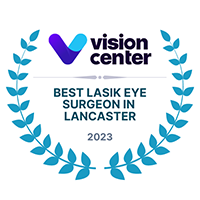Fear of the unknown can keep us from doing things we need to. The same applies to a procedure like cataract surgery. Cataract surgery can seem pretty complex.
You can learn more by setting up a cataract screening with Chesen Laser Eye Center in West Reading, Pennsylvania.
But before your screening, keep reading for 4 facts you never knew about cataract surgery!
Cataract Surgery Is Like LASIK
The actual process of cataract surgery is a procedure called “refractive lens exchange”. The beginning stages of it are almost exactly the same as LASIK surgery.
Before the procedure even begins, you’ll be given numbing eye drops. These drops ensure you will not feel any pain during the procedure. After the numbing drops kick in, a flap is cut into the cornea.
The cornea is the top layer of the eye that covers the pupil and iris. The flap is created and placed back down after the procedure. The flap is actually able to heal on its own, which allows for a shorter recovery time.
Another way cataract surgery is like LASIK is because it is short and quick. Cataract surgery is performed frequently, meaning that there are few complications or risks.
The Lens Of The Eye Is Replaced
While cataract removal surgery may be like LASIK, there is a significant difference. LASIK corrects vision by changing the shape of your cornea.
Unlike LASIK, Refractive lens exchange removes the lens of the eye. The lens is then replaced with an artificial lens, known as an IOL.
Your cataract surgeon breaks apart the lens using a special sonic device or lasers. The pieces of the lens are then removed using soft suction and the IOL is inserted into the eye.
Cataract Surgery Can Correct Other Vision Problems
Cataract surgery is mainly used for removing cataracts and restoring vision. But there’s a little bit more to cataract surgery than meets the eye!
Before cataracts, you may have suffered from refractive errors. These could have been nearsightedness, farsightedness, or astigmatism.
Besides restoring vision, cataract surgery can also correct refractive errors. It all depends on what IOL you choose! An IOL will provide you with sight, and can reduce your dependence on glasses. If you don’t want to wear glasses after cataract surgery, you’ll need to choose your IOL carefully.
Monofocal IOLs focus light at either near or far distance, but not both. This means you will still need glasses to correct for one of the distances.
Multifocal IOLs focus light for both near and far distances. Multifocal IOLs allow patients to see near and far, often without needing glasses!
Accommodating IOLs also correct for both near and far distances. What makes an accommodating IOL different from a multifocal IOL is how the IOL moves.
The accommodating IOL moves inside the eye much like a natural lens. This creates the smoothest transition possible when switching distances.
Toric IOLs specifically treat those with astigmatism. With astigmatism, the cornea is irregularly shaped. This produces vision that can be blurry. A toric IOL can correct blurry vision, and restore it.
Cataract Surgery Is Common
Cataract removal surgery is, in fact, the most performed surgery in the world. This is in no small part due to the fact that every person will eventually get cataracts.
When someone gets cataracts depends on many factors. Some of these can be environment and lifestyle, as well as genetics. Cataracts are a part of life. Since cataract surgery is so common, it’s well understood and safe to undergo.
Concerned about cataracts? Schedule your cataract screening with Chesen Laser Eye Center in West Reading, PA today!






